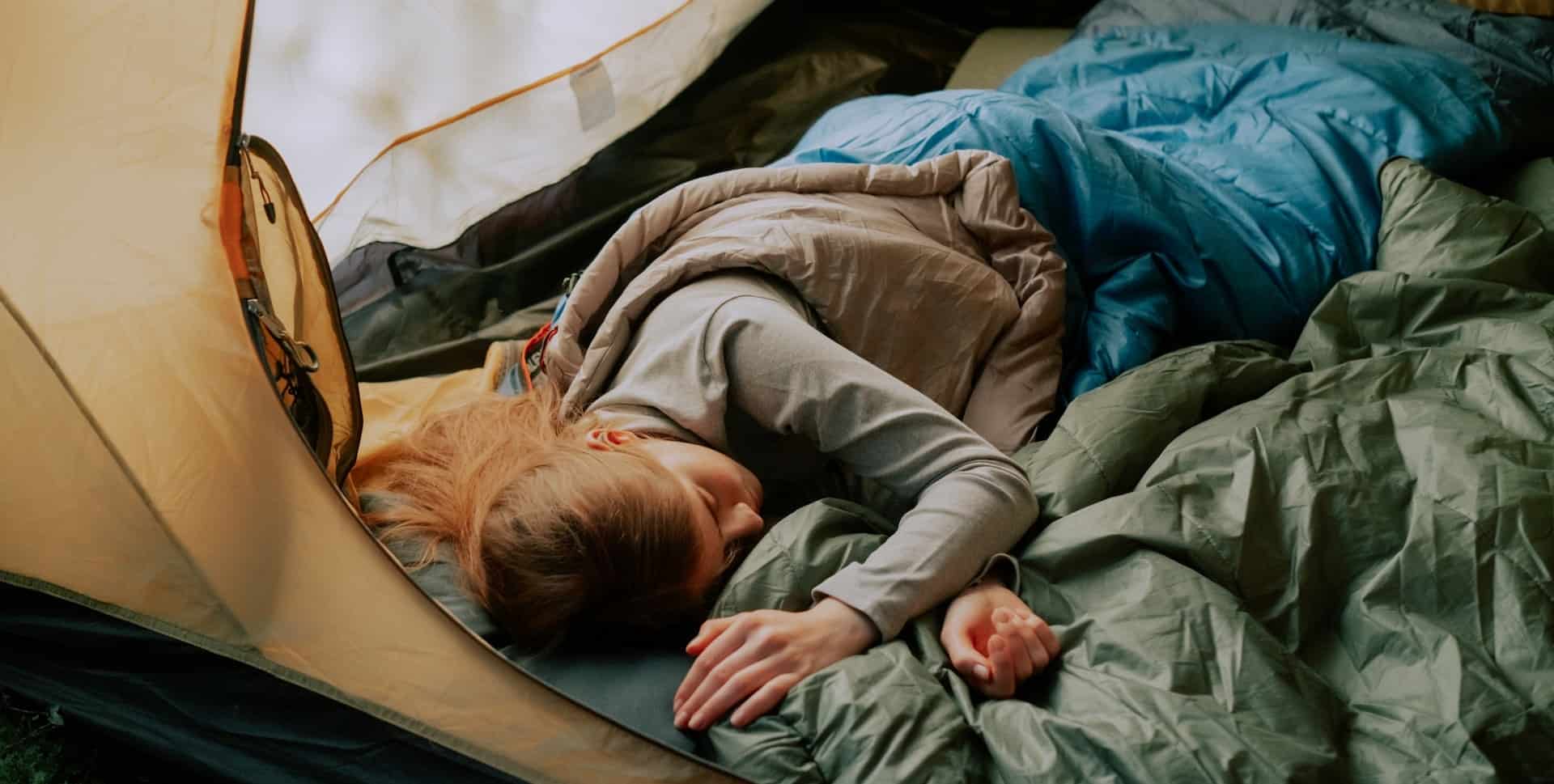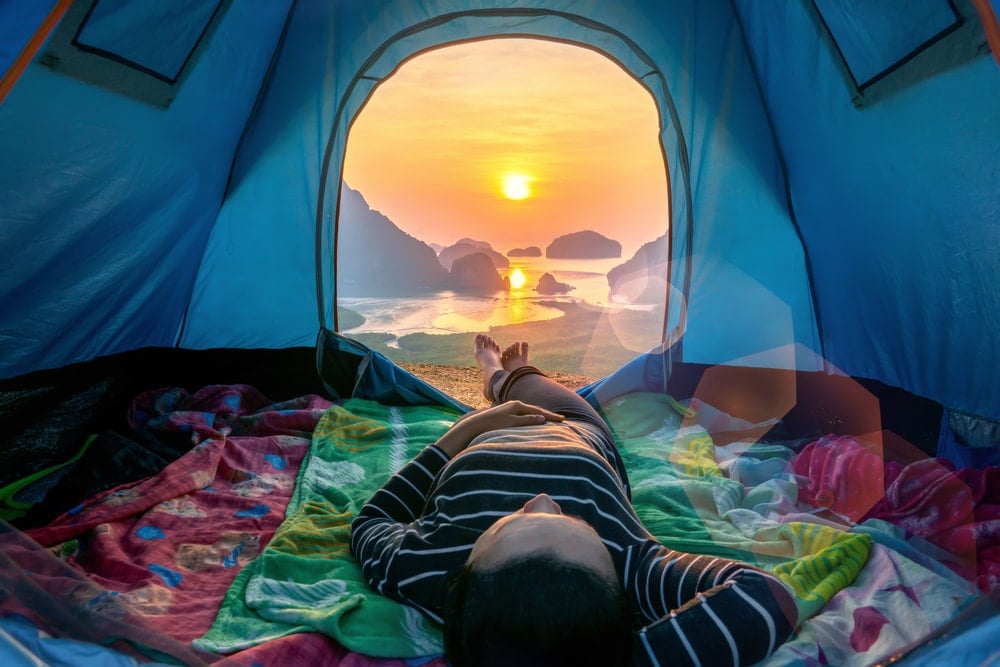I. Introduction

A. Importance of connecting with nature and finding peace in the outdoors
In our fast-paced and technology-driven world, it is essential to take time to connect with nature and find peace in the outdoors. Sleeping in a tent offers a unique and immersive experience that allows us to disconnect from the noise and distractions of modern life and embrace the tranquility of nature. This article will focus on the benefits and joys of sleeping in a tent, providing a comprehensive guide for those who seek to enhance their outdoor experience.
II. Benefits of Sleeping in a Tent
A. Immersion in nature’s tranquility
One of the greatest benefits of sleeping in a tent is the opportunity to immerse oneself in nature’s tranquility. By opening ourselves up to the sounds of wildlife, we can find solace in the chirping of birds, the rustling of leaves, and the distant howls of animals. During the night, the starry sky becomes our canopy, providing a breathtaking view that brings a sense of awe and wonder.
B. Escaping the noise and distractions of modern life
Sleeping in a tent offers a chance to escape the noise and distractions of our technology-driven world. By disconnecting from screens and devices, we can fully embrace the simplicity and slower pace of outdoor living. This break from constant notifications and responsibilities allows for a reset, offering a much-needed respite for our minds and bodies.
III. Preparing for a Night in a Tent

A. Choosing the right tent
Before embarking on a tent camping trip, it is crucial to choose the right tent for your needs. Consider factors such as size, weather resistance, and ease of setup. Various tent types, such as dome, tunnel, and backpacking, offer different features and benefits, so it is essential to explore the options and select the one that suits your camping style.
B. Selecting appropriate camping gear
In addition to the tent, it is important to select appropriate camping gear to ensure a comfortable night’s sleep. Invest in a quality sleeping bag that provides warmth and insulation, as well as a sleeping pad or mattress for added comfort. Don’t forget essentials like lighting for the tent and camping chairs for relaxation.
IV. Setting Up Camp
A. Finding a suitable campsite
When setting up camp, it is important to find a suitable campsite that provides comfort and safety. Look for a flat and level ground to pitch your tent, as it will ensure a more comfortable sleeping area. Additionally, natural windbreaks, such as trees or rocks, can provide protection from strong winds and add an extra layer of privacy. Consider the proximity to water sources for cooking and drinking, as well as restroom facilities for convenience.
B. Pitching the tent

To create a stable and secure shelter, it is crucial to properly pitch your tent. Follow these step-by-step guidelines:
- Clear the ground: Remove any rocks, sticks, or debris from the campsite to create a smooth surface for the tent.
- Lay out the tent: Unfold the tent and lay it flat on the ground, aligning it with the desired orientation.
- Stake down the corners: Insert tent stakes into the corners of the tent to secure it to the ground. Make sure the stakes are angled away from the tent to provide maximum stability.
- Assemble the poles: Connect the tent poles according to the manufacturer’s instructions and slide them through the corresponding loops or sleeves on the tent fabric.
- Raise the tent: Lift the tent poles, gradually raising the tent off the ground. Make sure the poles are properly inserted into the grommets or pole pockets on the tent.
- Secure the rainfly (if applicable): If your tent has a rainfly, attach it over the tent for added protection against rain and wind. Make sure it is properly secured using the provided attachment points and guylines.
- Adjust and tighten: Once the tent is raised, adjust the tension of the fabric by tightening the guylines and adjusting the tent stakes as needed. This will ensure a taut and stable structure.
By following these guidelines, you can successfully set up your tent and create a comfortable and secure camping environment.
V. Enhancing the Tent Sleeping Experience
A. Creating a cozy sleeping area
To make your tent a comfortable sleeping space, consider adding cozy elements. Bring along comfortable bedding, such as sleeping bags or air mattresses, to ensure a good night’s sleep. Don’t forget to pack extra blankets or sleeping pads for added warmth and cushioning. Additionally, consider using camping-friendly accessories like earplugs to block out noise and eye masks to shield from early morning light.

B. Staying warm and comfortable
Maintaining warmth and comfort in your tent is crucial, especially during colder seasons or inclement weather. Consider these tips:
- Insulate the tent: Use a footprint or groundsheet underneath your tent to provide insulation and protect the tent floor from moisture. Additionally, consider using a tent insulator or thermal blanket on the inside walls of the tent for added warmth.
- Layer up: Dress in layers and use sleeping bags or bedding appropriate for the weather conditions. Consider using sleeping bag liners or thermal blankets for extra warmth.
- Ventilation and condensation control: Properly vent your tent to prevent condensation buildup, which can lead to a damp and uncomfortable environment. Open vents or windows slightly to allow for airflow while still maintaining privacy and protection from the elements.
- Rain and wind protection: Ensure that your tent is properly sealed and secured to protect against rain and wind. Use rainflys, guy lines, and stake out the tent to prevent water leakage and maintain stability in windy conditions.
By implementing these strategies, you can create a warm, comfortable, and cozy sleeping environment in your tent.
VI. Embracing the Night in a Tent
A. Cooking and enjoying meals outdoors

One of the joys of sleeping in a tent is the opportunity to cook and enjoy meals outdoors. Consider these tips:
- Campfire cooking: If allowed and safe, build a campfire and use it for cooking meals. Use a grill grate or cooking tripod to cook food directly over the flames.
- Portable stoves: If campfires are not allowed or convenient, bring a portable camping stove. These stoves provide a reliable and controlled heat source for cooking meals.
- Savoring the experience: Enjoy the unique experience of eating under the stars. Set up a picnic table or spread out a blanket to create a cozy dining area. Take the time to savor each bite and appreciate the beauty of nature around you.
B. Engaging in nighttime activities
Nighttime in a tent offers a multitude of activities and experiences to engage in. Consider the following:
- Stargazing: Enjoy the unobstructed view of the night sky and take the time to identify constellations or simply marvel at the vastness of the universe. Use star maps or stargazing apps to enhance your knowledge and appreciation of the night sky.
- Telling stories around the campfire: Gather around the campfire and engage in storytelling. Share ghost stories, personal experiences, or simply enjoy the warmth and camaraderie that comes with storytelling around a campfire.
By embracing these nighttime activities, you can fully immerse yourself in the tent camping experience and create lasting memories.
Conclusion
In conclusion, sleeping in a tent offers a unique and rewarding experience that allows us to immerse ourselves in nature, escape the noise of modern life, and find peace and tranquility. By properly setting up camp, enhancing the sleeping area, and embracing outdoor activities, we can fully enjoy the joys of sleeping in a tent. Whether it’s the sounds of wildlife, the beauty of the starry night sky, or the simple pleasure of cooking and eating outdoors, tent camping provides an opportunity to connect with nature and create unforgettable memories. So, pack your tent, embark on an adventure, and embrace the serenity that comes with sleeping in a tent.
